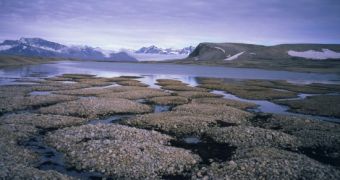A team of researchers working with the University of Oxford recently have decided to take some time to investigate the caves currently found in Siberia. Evidence collected while carrying out this study suggests that global warming will eventually cause the permafrost in this part of the world to thaw.
Should this happen, about 1000 giga-tonnes of greenhouse gases such as carbon dioxide and methane, which are currently trapped in these frozen lands, are set to be released into the atmosphere.
As explained on previous occasions, these greenhouse gases will do no more and no less than fuel climate change and global warming, thus causing the permafrost to thaw even further.
In order to reach these conclusions concerning the effect of said ongoing phenomena on the Siberian permafrost, the researchers have analyzed the stalactites and stalagmites formed inside caves situated along a so-called permafrost frontier (i.e. the place where the ground starts being permanently frozen up to a considerable depth).
Their decision to focus on stalactites and stalagmites had to do with the fact that these formations only develop and grow when rainwater or snowmelt makes its way into the caves.
According to Science News, this basically means that they are a trustworthy indicator of how the permafrost has changed throughout the years.
“The stalactites and stalagmites from these caves are a way of looking back in time to see how warm periods similar to our modern climate affect how far permafrost extends across Siberia,” pointed out Dr. Anton Vaks.
By the looks of it, an increase of just 1.5 degrees Celsius in global temperatures would be more than enough to cause the permafrost to thaw and release its greenhouse gases load.
Needless to say, the thawing of the permafrost would also impact heavily on local communities inhabiting these regions.
“As permafrost covers 24% of the land surface of the Northern hemisphere significant thawing could affect vast areas and release giga-tonnes of carbon. This has huge implications for ecosystems in the region, and for aspects of the human environment.”
“For instance, natural gas facilities in the region, as well as power lines, roads, railways and buildings are all built on permafrost and are vulnerable to thawing. Such a thaw could damage this infrastructure with obvious economic implications,” Dr. Anton Vaks wished to emphasize.

 14 DAY TRIAL //
14 DAY TRIAL //